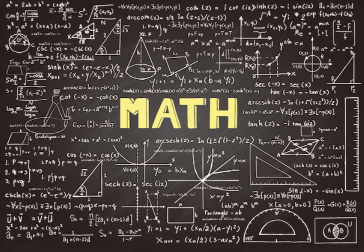Question
salesinfo = (salespersonid, totalsales, commission)
In a certain year, due to better business results, the company decides to further reward its salespersons by enhancing the commission paid to them as per the following formula:
If commission < = 50000, enhance it by 2% If 50000 < commission < = 100000, enhance it by 4% If commission > 100000, enhance it by 6%
The IT staff has written three different SQL scripts to calculate enhancement for each slab, each of these scripts is to run as a separate transaction as follows:
T1
Update salesinfo
Set commission = commission * 1.02
Where commission < = 50000;
T2
Update salesinfo
Set commission = commission * 1.04
Where commission > 50000 and commission is < = 100000;
T3
Update salesinfo
Set commission = commission * 1.06
Where commission > 100000;
Which of the following options of running these transactions will update the commission of all salespersons correctly?
a.
Execute T1 followed by T2 followed by T3
b.
Execute T2, followed by T3; T1 running concurrently throughout
c.
Execute T3 followed by T2; T1 running concurrently throughout
d.
Execute T3 followed by T2 followed by T1
Posted under GATE cse question paper DBMS
Engage with the Community - Add Your Comment
Confused About the Answer? Ask for Details Here.
Know the Explanation? Add it Here.
Q. A company maintains records of sales made by its salespersons and pays them commission based on each individual's total sales made in a year. This data is maintained in a table...
Similar Questions
Discover Related MCQs
Q. A table 'student' with schema (roll, name, hostel, marks), and another table 'hobby' with schema (roll, hobbyname) contains records as shown below:
Table: Student
ROLL NAME HOSTEL MARKS
1798 Manoj Rathod 7 95
2154 Soumic Banerjee 5 68
2369 Gumma Reddy 7 86
2581 Pradeep Pendse 6 92
2643 Suhas Kulkarni 5 78
2711 Nitin Kadam 8 72
2872 Kiran Vora 5 92
2926 Manoj Kunkalikar 5 94
2959 Hemant Karkhanis 7 88
3125 Rajesh Doshi 5 82
Table: hobby
ROLL HOBBYNAME
1798 chess
1798 music
2154 music
2369 swimming
2581 cricket
2643 chess
2643 hockey
2711 volleyball
2872 football
2926 cricket
2959 photography
3125 music
3125 chess
The following SQL query is executed on the above tables:
select hostel
from student natural join hobby
where marks > = 75 and roll between 2000 and 3000;
Relations S and H with the same schema as those of these two tables respectively contain the same information as tuples. A new relation S’ is obtained by the following relational algebra operation: S’ = ∏hostel ((σs.roll = H.roll (σmarks > 75 and roll > 2000 and roll < 3000 (S)) X (H)) The difference between the number of rows output by the SQL statement and the number of tuples in S’ is
View solution
Q. In an inventory management system implemented at a trading corporation, there are several tables designed to hold all the information. Amongst these, the following two tables hold information on which items are supplied by which suppliers, and which warehouse keeps which items along with the stock-level of these items. Supply = (supplierid, itemcode) Inventory = (itemcode, warehouse, stocklevel) For a specific information required by the management, following SQL query has been written
Select distinct STMP.supplierid
From Supply as STMP
Where not unique (Select ITMP.supplierid
From Inventory, Supply as ITMP
Where STMP.supplierid = ITMP.supplierid
And ITMP.itemcode = Inventory.itemcode
And Inventory.warehouse = 'Nagpur');
For the warehouse at Nagpur, this query will find all suppliers who
View solution
Q. Consider the relations r1(P, Q, R) and r2(R, S, T) with primary keys P and R respectively. The relation r1 contains 2000 tuples and r2 contains 2500 tuples. The maximum size of the join r1⋈ r2 is :
View solution
Q. Student (school-id, sch-roll-no, sname, saddress)
School (school-id, sch-name, sch-address, sch-phone)
Enrolment(school-id sch-roll-no, erollno, examname)
ExamResult(erollno, examname, marks)
What does the following SQL query output?
SELECT sch-name, COUNT (*)
FROM School C, Enrolment E, ExamResult R
WHERE E.school-id = C.school-id
AND
E.examname = R.examname AND E.erollno = R.erollno
AND
R.marks = 100 AND S.school-id IN (SELECT school-id
FROM student
GROUP BY school-id
HAVING COUNT (*) > 200)
GROUP By school-id
View solution
Q. Given the basic ER and relational models, which of the following is INCORRECT?
View solution
Q. Consider a join (relation algebra) between relations r(R)and s(S) using the nested loop method. There are 3 buffers each of size equal to disk block size, out of which one buffer is reserved for intermediate results. Assuming size(r(R)) < size(s(S)), the join will have fewer number of disk block accesses if
View solution
Q. Let E1 and E2 be two entities in an E/R diagram with simple single-valued attributes. R1 and R2 are two relationships between E1 and E2, where R1 is one-to-many and R2 is many-to-many. R1 and R2 do not have any attributes of their own. What is the minimum number of tables required to represent this situation in the relational model?
View solution
Q. In a schema with attributes A, B, C, D and E following set of functional dependencies are given
A → B A → C CD → E B → D E → A
Which of the following functional dependencies is NOT implied by the above set?
View solution
Q. A database of research articles in a journal uses the following schema.
(VOLUME, NUMBER, STARTPGE, ENDPAGE, TITLE, YEAR, PRICE)
The primary key is (VOLUME, NUMBER, STARTPAGE, ENDPAGE) and the following functional dependencies exist in the schema.
(VOLUME, NUMBER, STARTPAGE, ENDPAGE) -> TITLE
(VOLUME, NUMBER) -> YEAR
(VOLUME, NUMBER, STARTPAGE, ENDPAGE) -> PRICE
The database is redesigned to use the following schemas.
(VOLUME, NUMBER, STARTPAGE, ENDPAGE, TITLE, PRICE)
(VOLUME, NUMBER, YEAR)
Which is the weakest normal form that the new database satisfies, but the old one does not?
View solution
Q. Which of the following relational query languages have the same expressive power?
1.Relational algebra
2.Tuple relational calculus restricted to safe expressions
3.Domain relational calculus restricted to safe expressions
View solution
Q. A Relation R with FD set {A->BC, B->A, A->C, A->D, D->A}. How many candidate keys will be there in R?
View solution
Q. What is the min and max number of tables required to convert an ER diagram with 2 entities and 1 relationship between them with partial participation constraints of both entities?
View solution
Q. Relation R has eight attributes ABCDEFGH. Fields of R contain only atomic values. F = {CH -> G, A -> BC, B -> CFH, E -> A, F -> EG} is a set of functional dependencies (FDs) so that F+ is exactly the set of FDs that hold for R. How many candidate keys does the relation R have?
View solution
Q. Consider the FDs given in above question. The relation R is
View solution
Q. Which of the following is TRUE?
View solution
Q. Consider a relational table with a single record for each registered student with the following attributes.
1. Registration_Num: Unique registration number
of each registered student
2. UID: Unique identity number, unique at the
national level for each citizen
3. BankAccount_Num: Unique account number at
the bank. A student can have multiple accounts
or join accounts. This attribute stores the
primary account number.
4. Name: Name of the student
5. Hostel_Room: Room number of the hostel
Which one of the following option is INCORRECT?
View solution
Q. Consider a relational table with a single record for each registered student with the following attributes.
1. Registration_Num: Unique registration number
of each registered student
2. UID: Unique identity number, unique at the
national level for each citizen
3. BankAccount_Num: Unique account number at
the bank. A student can have multiple accounts
or join accounts. This attribute stores the
primary account number.
4. Name: Name of the student
5. Hostel_Room: Room number of the hostel
Which one of the following option is INCORRECT?
View solution
Q. Consider the following relational schema:
Suppliers(sid:integer, sname:string, city:string, street:string)
Parts(pid:integer, pname:string, color:string)
Catalog(sid:integer, pid:integer, cost:real)
(sid,pid are primary keys)
Assume that, in the suppliers relation above, each supplier and each street within a city has a unique name, and (sname, city) forms a candidate key. No other functional dependencies are implied other than those implied by primary and candidate keys. Which one of the following is TRUE about the above schema?
View solution
Q. Consider the following relational schemes for a library database: Book (Title, Author, Catalog_no, Publisher, Year, Price) Collection (Title, Author, Catalog_no) with in the following functional dependencies:
I. Title Author --> Catalog_no
II. Catalog_no --> Title, Author, Publisher, Year
III. Publisher Title Year --> Price
Assume {Author, Title} is the key for both schemes. Which of the following statements is true?
View solution
Q. Consider the relation scheme R = {E, F, G, H, I, J, K, L, M, M} and the set of functional dependencies {{E, F} -> {G}, {F} -> {I, J}, {E, H} -> {K, L}, K -> {M}, L -> {N} on R. What is the key for R?
View solution
Suggested Topics
Are you eager to expand your knowledge beyond DBMS? We've curated a selection of related categories that you might find intriguing.
Click on the categories below to discover a wealth of MCQs and enrich your understanding of Computer Science. Happy exploring!








